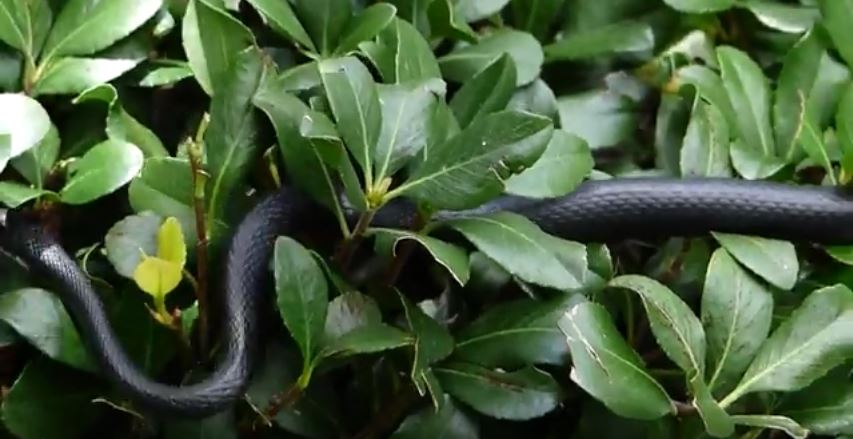The Black Racer Snake: Appearance, biology, life cycle, habitat, diet, behavior

Black racer snake biology
Known as the coluber constrictor priapus, the black racer snake is not poisonous. It is commonly found in the southern area of the US. This species of snake tends to be active during the daytime. Its body’s sides are black and its stomach is usually grayish in color, but sometimes it is pale white. The snake is quite fast; this is due to the fact that they need to escape very quickly before humans or other predators catch them during the day!
Apparently, the black racer is color blind. They don’t know how to differentiate color. An adult snake can have 55 inches of length and it can grow as big as 70 inches long. The behavior pattern of a black racer is different from constrictors.
Black Racer snake diet
The black racer snake eats other animals that are small sizes. This includes birds, insects and even other snake species. The black racer snake can quickly attack all of a sudden to catch their prey.
Black racer snake behavior
The black racer snake behavior is unlike any other snake species. It has a very fast speed as if it can run. This is also where it gets its name, racer. It can easily be threatened and it will not hesitate to bite you. Generally, they are not afraid to fight and they are ambitious when pursuing prey. The snake is also considered fierce.
The greatest threat for a black racer is definitely humans. Sometimes it appears similar to the moccasin. However, the moccasin is venomous and could bite someone to death. Another threat for the black racer snake is birds. Some big birds attack from up above.
Black racer snake habitat
The habitat of a black racer snake is usually in the forest. It can also be spotted in urban gardens or thick lush green jungles. It is able to vibrate its tail, which almost sounds like a rattlesnake! It is fairly easy to find the snake wandering around the yard, and that makes hunting it pretty easy.
Go back to the How to Get Rid of Snakes page or email us if you have any other questions about The Black Racer Snake: Appearance, biology, life cycle, habitat, diet, behavior
About Us
We are the Pest Education Network, a non-profit organization that focuses on wildlife and pest removal education. Our approach utilizes Integrated Pest Management, a strategy advocating prevention and humane methods.


